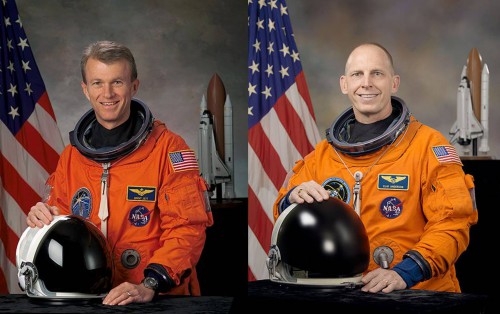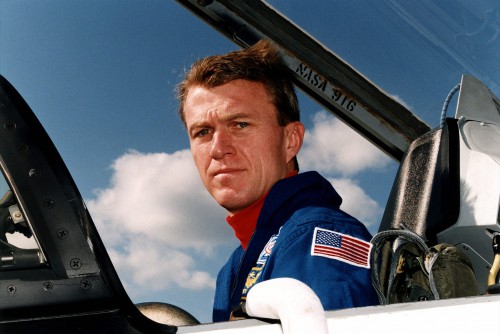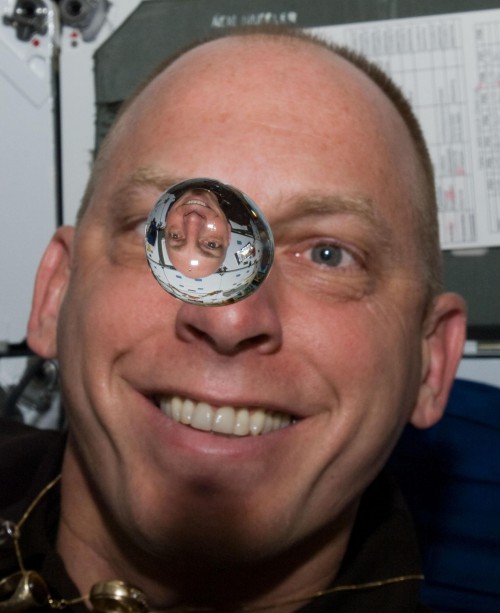
NASA has lost two more veteran astronauts, including the head of the space agency’s Flight Crew Operations Directorate. The first of the astronauts to leave was Brent Jett, who flew into space four times aboard the space shuttle. His most recent position with NASA was as the deputy manager of the agency’s Commercial Crew Program. Also leaving NASA is Clayton Anderson, who flew into space twice aboard the shuttle. The loss of these two experienced flyers highlights a “brain drain” that NASA has been experiencing.
The latest two departures from NASA’s astronaut corps are two of the more experienced astronauts that were with the agency.
Brent Ward Jett Jr. grew up with a fascination for airplanes, and his boyhood heroes were the astronauts of Mercury and Gemini and Apollo.
“But I did not have that revelation at that early age that someday I’m going to be an astronaut,” he told a NASA interviewer. “It didn’t seem like it was even a possibility for me.”
Jett received much of his early education in Florida, and after graduation from Northeast High School in Oakland Park in 1976 he went to the University of Florida for a year and then entered the Naval Academy to study aerospace engineering.
“That year in Florida helped me understand what was on the other side,” he said, before entering the “very, very rigid environment” of a naval education.
Jett earned his degree in 1981—graduating first in his 976-strong class—and immediately plunged into flight training. He was designated a Naval Aviator in March 1983 and flew the F-14 Tomcat, deploying to the Mediterranean and Indian Oceans aboard the USS Saratoga. During this period, he served as an airwing-qualified landing signal officer and attended the Navy’s Fighter Weapons School (the famed “Top Gun”). Over the next few years, Jett was selected to attend Test Pilot School and earned a master’s degree in aeronautical engineering from the Naval Postgraduate School. In June 1990—by now a qualified test pilot—he worked as a project test pilot and returned to the operational Navy in September the following year. Within six months, Jett was picked as a member of NASA’s 14th group of astronaut candidates, who dubbed themselves “The Hogs.”

Years later, he paid tribute to his military service as having positioned him appropriately for admission into the hallowed ranks of NASA’s astronaut corps. “Somewhat unintentionally,” he told the interviewer, “I ended up doing those things that were necessary to become qualified to apply to become an astronaut. It wasn’t until I was a test pilot that I had a chance to take a trip down here to the Johnson Space Center, visit with the astronauts, and find out what the job really entailed.”
That “job” encompassed four shuttle flights—as pilot on STS-72 and STS-81 in January 1996 and January 1997, and as mission commander on STS-97 and STS-115 in November 2000 and September 2006—and a wide range of managerial responsibilities. He served as NASA’s Director of Operations in Russia in 1997-98 and was three months away from STS-115 when Columbia was destroyed during re-entry in February 2003. Unlike many shuttle crews assembled before the disaster, Jett and his team remained intact and their mission resumed construction of the International Space Station after a four-year hiatus. Jett left the Navy in July 2007, but remained with NASA, serving until 2011 as Director of the Flight Crew Operations Directorate and from 2011 until his retirement in January 2013 as Deputy Manager of the Commercial Crew Program.
“Brent was an incredible leader for the Commercial Crew Program, the agency, and the nation,” said Ed Mango, Commercial Crew Program manager. “His efforts helped our country put together a strong foundation in order to build a home-grown capability for human access to low-Earth orbit.”
Like Brent Jett, Clay Anderson grew up with no grand plans of someday becoming an astronaut … unless one should choose to speak to his mother. “She says I was ready to be an astronaut at age four,” he once told a NASA interviewer, “when she dressed me up in tin foil and I got second place in the local parade during July. She said I was robbed: I should’ve gotten first.” Anderson’s earliest recollection of space was watching a black and white television on the night that the Apollo 8 astronauts entered orbit around the Moon in December 1968, just two months shy of his tenth birthday.
Clayton Conrad Anderson was born in Omaha, Neb., on 23 February 1959. He attended high school in his home state and graduated from Hastings College with a degree in physics in 1981. Anderson then enrolled at Iowa State University for his master’s degree in aerospace engineering.
“The main reason I went there,” he said of the move to Iowa, “was they were one of the few schools that offered to pay me to go there. They offered me a teaching assistantship.”
Anderson’s arrival at NASA came about through a certain amount of serendipity and good luck.

A man named Maynard Huntley helped Anderson to secure a summer internship at NASA. His formal career with the space agency began in 1983 in JSC’s Mission Planning and Analysis Division, performing rendezvous and proximity operations trajectory designs for early shuttle missions. By 1988, Anderson had joined the Mission Operations Directorate, working on the trajectory design team for the Galileo mission to Jupiter, and after several further flight design posts he was selected as a member of the 17th group of NASA astronauts—nicknamed “The Penguins”—in June 1998.
One of Anderson’s earliest accomplishments was completion of the EVA Skills program, and in his two space missions he would go on to record no fewer than six career EVAs. His first flight was Expedition 15/16 aboard the International Space Station, launching to the outpost aboard STS-117 in June 2007 and returning to Earth aboard STS-120 the following November, after 152 days. His second mission, STS-131, was the next-to-last voyage of Space Shuttle Discovery in April 2010.
“Clay will certainly be missed in the Astronaut Office, especially for his technical expertise. His combination of shuttle, station long duration, and spacewalk experience was extremely valuable to us,” said Bob Behnken, chief of the Astronaut Office. “We wish him continued success in future endeavors, and know he will continue to captivate whenever and wherever he shares his spaceflight experiences.”
NASA has lost many of its seasoned space flight veterans since the last space shuttle mission, STS-135, concluded in July 2011. This has raised the concern that the space agency might be unable to complete its human spaceflight objectives. NASA needs astronauts to assist in the management of the International Space Station, and to also assist with the development of the commercial crew vehicles that NASA’s private partners are working to develop. Astronauts also serve in a variety of other roles. For this reason the agency needs a corps of trained astronauts to complete these various tasks, and it is unclear how many more departures NASA can sustain before it is not able to complete these obligations.
This article could not have been produced without the support of AmericaSpace’s Senior Writer Ben Evans, who contributed large portions of the astronauts’ biographies.
Missions » ISS »



“..and another TWO!! bite the dust..”…….bound to happen, sadly. Absolutely EXCELLENT article…VERY INFORMATIVE…thank you for that! Cannot help but to remark on the last name of “JETT”….